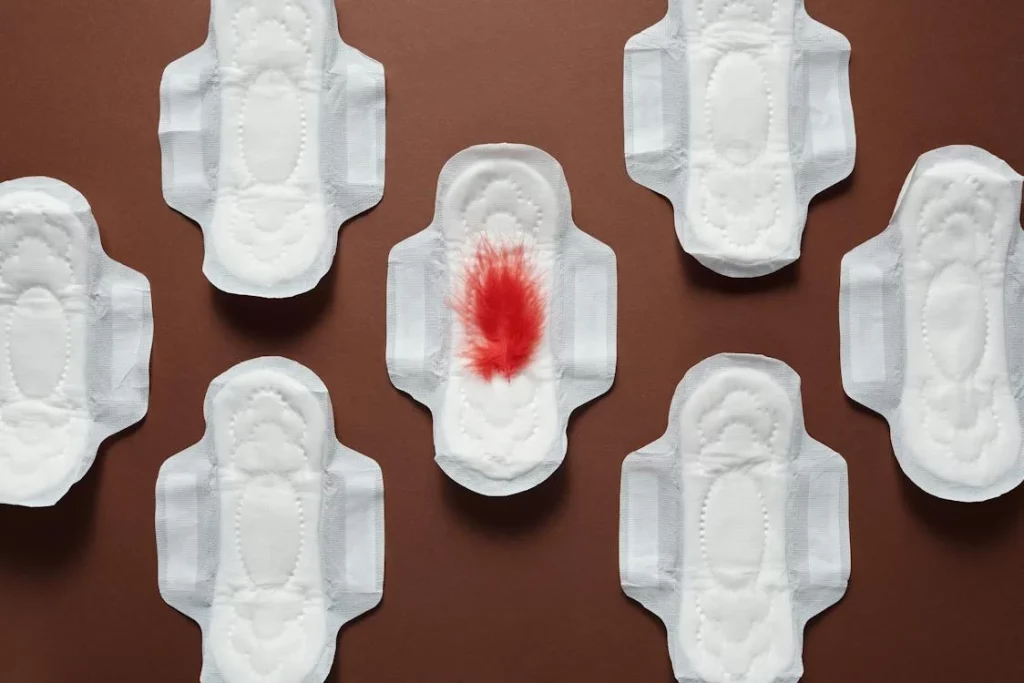We cannot overemphasize the impact of Sanitary pad use on our ecosystem. It is true that menstruation in females is a natural and inevitable continuous occurrence process.
However, sanitary pads aren’t, that is to say, they aren’t inevitable and are most certainly not natural.
Going by this, we can agree that the use of sanitary pads though intricately designed to cater to the feminine menstrual health and hygiene needs on a monthly basis are sadly linked to environmental issues, climate change and sustainability.
This is becoming a huge concern, most of our feminine hygiene products are non-recyclable and non-biodegradable e.g are sanitary pads and tampons, and poses harm to the environment.
Some people in many countries as a means of getting rid of used sanitary pads have resorted to burning, burying, or simply disposing these hygiene products in toilets or latrines.
None of these methods effectively work to save our environment, rather, they leave negatively impact om air and soil quality and cause obstructions to sanitation systems, indirectly jeopardizing the health of public.
It is therefore pertinent to discuss expressly what impacts sanitary pads have on our ecosystem and how to adopt effective strategies to curb it.
What is a Sanitary Pad?
A sanitary pad, also referred to as a sanitary towel, is a hygienic piece of absorbent material designed to be comfortable placed during a period into the crotch of panties to absorb menstrual fluid and protect your clothes from getting ruined.
Most sanitary pads have a sticky bottom that presses against your pants to keep them in place for as long as possible but needs to be changed every 4 to 8 hours.
It comes in various sizes, shapes, and absorbances to suit the needs of every woman.
How do Sanitary Pads Affect the Environment
Sanitary pads cause a number of negative effects on our ecosystem. Some of which are outlined below:
Their lifecycle pollutes water bodies and landfills, leading to microplastics and other environmental and health hazards.
Increasing demand for sanitary pads in low- and middle-income countries, exacerbated by urbanization, presents challenges in menstrual waste management.
As we become more aware of the environmental crisis we face, it’s important to consider the impact our everyday choices, like the type of feminine hygiene products we use, have on the planet.
In this article, we’ll explore the various environmental impacts of disposable feminine hygiene products and discuss more sustainable alternatives.
What are the Impacts?
According to statistics, sanitary pads made with some plastic-based materials can take about 500 to 800 years to break down in landfills, to further compound issues some have plastic applicators that makes it even more difficult to decompose.
Experts estimates that the average lifetime use of disposable pads for one woman generates more than 28,000 pounds of waste.
The impact of sanitary products is found in our oceans and marine, with an estimated over 20 billion pads and tampons being dumped into landfills yearly.
Furthermore, while it sits in landfills and attempts to breakdown for such length of years, the decomposition process of these products release microplastics that pollute the oceans and marine environments.
Flushing sanitary pads directly into the toilet may pose even more detrimental, because they end up in drainage systems that ultimately discharge into the sea causing a significant threat to marine life.
Their lifecycle pollutes water bodies and landfills, leading to microplastics and other environmental and health hazards. Increasing demand for sanitary pads in low- and middle-income countries, exacerbated by urbanization, presents challenges in menstrual waste management.
In addition, since the composition of these products makes it impossible to be recycled, their disposal often involves incineration which releases toxic substances into the air and contributes in ozone depletion.
This alarming discovery highlights the urgent need for menstrual product manufacturers to adopt more sustainable and environmentally friendly practices.
As such, environmentally friendly alternatives such as reusable pads and menstrual cups are becoming more popular!
What Can be Done
Indeed, this is a question everyone should seek to answer, The Impact of Sanitary Pad Use on Our Ecosystem will be incomplete without a look into the possible solution and practise that can help us cope while saving our ecosystem.
For the purpose of conservation and sustainability, manufacturers of these hygienic products should find new ways to consciously offer great products while reducing carbon footprint including with menstrual care.
Reusable sanitary pads should be encouraged and manufactured, also cotton-only pads and tampons have emerged as a more ecofriendly alternative to traditional menstrual products.
These products are said to be made with only organic cotton, a natural material that actually biodegrades much more quickly than synthetic fibers, thereby actively reducing the amount of waste that ends up in landfills.
Feminine care products that are reusable pads include: Menstrual cups, menstrual discs, cloth pads etc.
These offer a long-lasting and sustainable solution for period care, individuals can significantly decrease their waste while also saving money in the long run.
We should be more welcoming to accepting these products especially when they are of great quality and offers no side effects. It is great for regions with efficient access to water, individuals with optimum sanitation, hygiene services and they are affordable.
